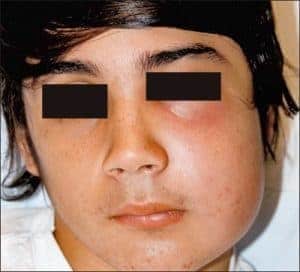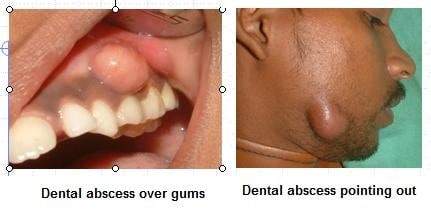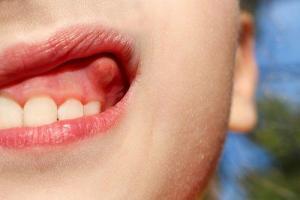- Zirconia Implants are Metal-Free and Hypoallergenic Zirconia Implant Dentistry has become more popular because zirconia is a biocompatible and bioinert ceramic material that completely integrates into jawbone without reacting with the human body. Zirconia implants are the best option for people with compromised immune systems, metal allergies, sensitivities, or those who prefer biocompatible dental materials.
- Zirconia is Corrosion Resistant Because zirconia implants are metal-free, they do not risk corrosion from being in a wet environment like the mouth. Though titanium is a stable element, it can corrode over time, causing tiny particles to break off and deposit into surrounding tissues. With zirconia, there is not risk of inflammation, infection, or bone loss due to corrosion.
- Zirconia Implants are Durable Zirconia is naturally inflexible, and even stronger than natural tooth enamel. Ceramic implants can endure up to 150 pounds of force before fracturing and cracking, making zirconia strong and durable for dental implant longevity.
- Zirconia Implants Integrate Well with Bone The success of a dental implant often depends on the integration process as the implant fuses to the jawbone. When the bone “rejects” an implant, there are complications, and the implant often fails. Zirconia implants have a good track record for successful integration with the jawbone.
- Zirconia Implants Help Avoid Plaque Buildup A non-polar structure creates a smooth finish to ceramic, making it difficult for plaque and other bacteria to attach themselves to zirconia dental implants. This helps to prevent implant failure due to bacteria and inflammation.
- Zirconia Implants Non-Conductive Because zirconia is not a metal, it does not conduct or hold onto heat. This creates a more stable healing environment without damage to surrounding tissue.
- Zirconia Implants Help to Preserve Bone Ceramic implants do not create bone loss, unlike titanium implants that have been shown to cause peri-implant bone loss.
- Zirconia Implants do not Have a Metallic Taste Due to the corrosion of titanium implants, some patients experience a metallic-like taste in their mouth. Zirconia implants are flavorless.
- Zirconia is Aesthetically Pleasing A frequent problem with zirconia implants is for patients with thin, translucent gums, or those experiencing gum recession who may end up with gray gums or metal showing around the crown margin. The non-metallic white color of zirconia gives it a more natural look than titanium. It’s a perfect base color that closely mimics what nature created in the first place.
- Zirconia Implants are Holistic-Friendly Ceramic dental implants do not interfere with the movement of energy through the body’s meridians, and since Zirconia Dental Implants are biocompatible, they are a perfect tooth replacement solution for patients who adhere to Holistic Dentistry principles.
Deciding which dental material to choose is best discussed between you and your Implant Dentist during a dental implant consultation. Your implant surgeon can help you determine whether you are a candidate for dental implants and weigh the pros and cons of titanium implants vs ceramic zirconia implants. Whichever material you choose, it is most important to find an experienced dental implant surgeon to help with your implant needs.
At Natural Dentist Associates in Rockville, MD, our Biological Implant Dentists have been placing and restoring dental implants for over 20 years. With state-of-the-art technology, well-trained staff, and high-performance ceramic dental implants made by SDS Swiss Dental Solutions in Europe, our expert ceramic implant dentists are well-equipped to help you through all stages of the dental implant process. From tooth extraction, to natural bone grafting, to implant placement, to implant crown, Natural Dentist Associates is your one-stop-shop for ceramic zirconia dental implants. Schedule your implant consultation today.
 A Root Canal by Definition: a filling of the canals of the roots of a tooth. The canals are the hollow centers of the tooth and roots where the living tissue inside the tooth, aka “Pulp”, used to reside. A root canal tooth is a tooth that is no longer alive or is in-fact dead. The filling material is most often a rubbery material called “gutta percha.” The goal of a Root Canal is to clean dying or dead tissue and bacteria and fungus out of the tooth and to seal it up and prevent re-infection. The goals of Root Canal treatment are idealistic because the tooth being porous, much like a sponge, is impossible to completely clean free of bacteria. So the truth of the matter is, bacteria and fungus will likely proliferate inside the tooth and slowly leak out into the underlying bone. A Root Canal treatment is a less than perfect treatment and can present future challenges with jawbone infections, immunological issues and consequent pathological problems.
A Root Canal by Definition: a filling of the canals of the roots of a tooth. The canals are the hollow centers of the tooth and roots where the living tissue inside the tooth, aka “Pulp”, used to reside. A root canal tooth is a tooth that is no longer alive or is in-fact dead. The filling material is most often a rubbery material called “gutta percha.” The goal of a Root Canal is to clean dying or dead tissue and bacteria and fungus out of the tooth and to seal it up and prevent re-infection. The goals of Root Canal treatment are idealistic because the tooth being porous, much like a sponge, is impossible to completely clean free of bacteria. So the truth of the matter is, bacteria and fungus will likely proliferate inside the tooth and slowly leak out into the underlying bone. A Root Canal treatment is a less than perfect treatment and can present future challenges with jawbone infections, immunological issues and consequent pathological problems.
